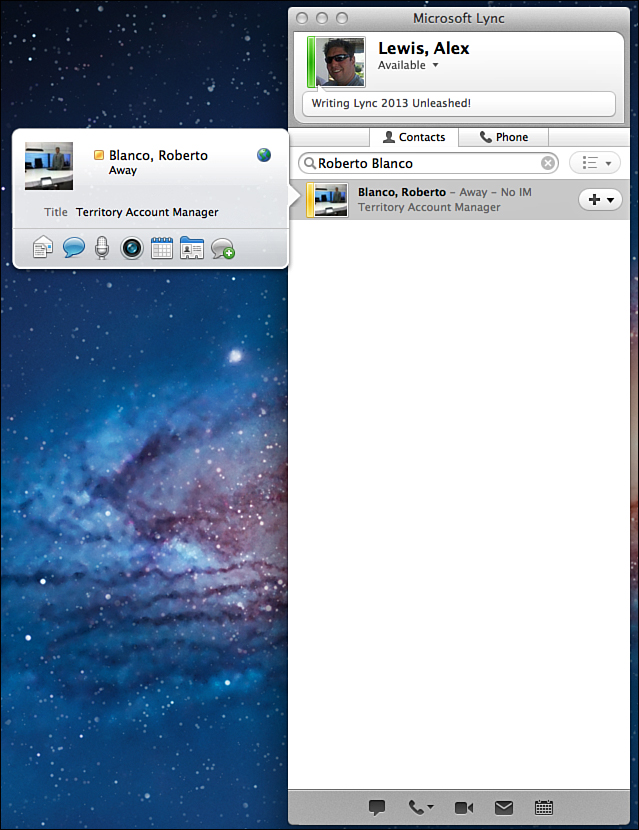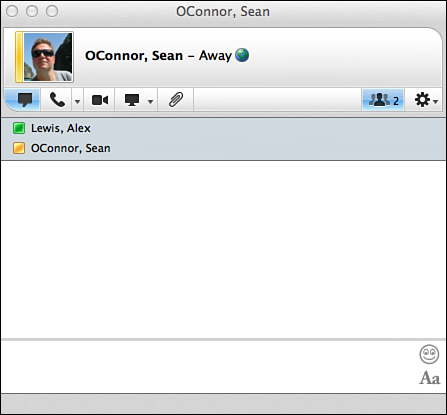9. Managing Contacts
Most people have grown accustomed to the
behaviors in Outlook in which you can quickly look up a user in the
contacts or by starting to type the person’s name. Microsoft Lync:Mac
follows this model by organizing contacts by groups and by enabling you
to quickly search for contacts by typing the person’s name.
For example, on the
search line (indicated by a magnifying glass), if you type a name, the
client suggests names based on the user’s personal contacts and the
global address list. From here, click and drag the contact to add the
contact to a contact group. When this occurs, the person you added
receives a notification that you added him and has the option to add
you as well. When added, the contacts appear in the group you selected
and you are able to see the presence information at any time.
After a contact is added, you can move the
contact from one contact group to another by clicking and dragging the
contact. By holding the mouse over the name of the contact, you can see
the notes he has set in his client, as well as his picture, as shown in
Figure 1.

Figure 1. Lync:Mac contact details.
10. Managing Groups
The Microsoft Lync:Mac client enables users
to organize their contacts by placing them inside groups. By default,
the group is Other Contacts.
These groups show a status of how many
contacts there are in that group and how many are currently online. For
example, you might see Other Contacts (4/5) to indicate that four of
the five contacts in that group are online. You can expand the group by
clicking the hollow triangle to the left of the name to populate the
full list of contacts.
A convenient
use of groups is to organize members of a project or department. By
right-clicking the group name, you can choose to launch a conference
call that will invite all members of that group. Similar functionality
can be achieved by selecting multiple contacts by Control-clicking them
and then right-clicking to choose Start a Conference Call. This call
can use Lync’s PC-to-PC call features, through the PSTN or an attached
PBX.
11. IM Features
For most environments, the most commonly used
feature in the Microsoft Lync:Mac client is Instant Messaging. This
function enables users to stop cluttering mailboxes with “where do you
want to go for lunch?” types of messages and enables users to limit
their messages to only people who are likely to respond quickly. This
also is where accurate presence information comes in handy.
Starting an IM conversation is as simple as
double-clicking a contact. Doing so launches the IM window, which
defaults to the IM tab, as shown in Figure 2.

Figure 2. IM conversation.
The Lync:Mac IM client works much
like any other IM client. You can see the status information for the
person with whom you are communicating, and there are two areas in the
window: one in which to type and one in which to display the
conversation. Users have access to the usual features such as altering
the font, color, and size of the text, as well as a menu of emoticons.